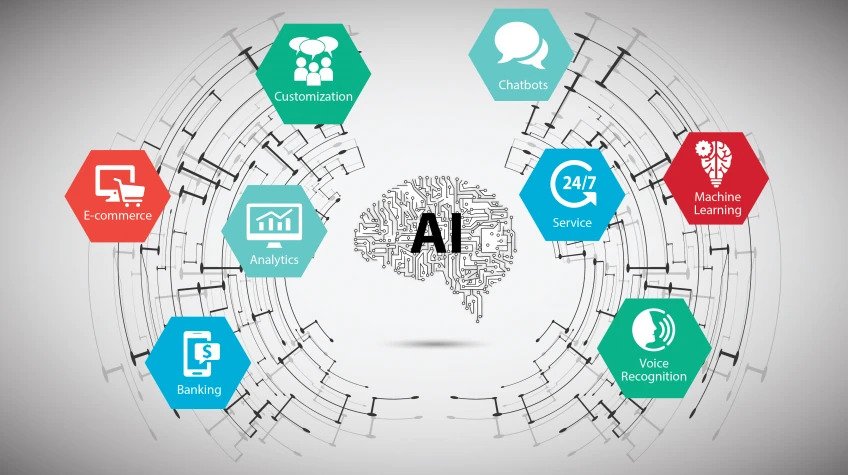Hey there! Are you curious about what your customers really think about your products or services? Understanding consumer sentiment can give you valuable insights into how your brand is perceived and what you can do to improve customer satisfaction. With AI technology, analyzing consumer sentiment has become easier and more accurate than ever before. In this article, we’ll dive deep into how AI can help you understand and act on consumer sentiment, ensuring your business stays ahead of the curve. Ready to learn more? Let’s get started!
Understanding Consumer Sentiment Analysis
Delving Deeper into Consumer Sentiment Analysis
Consumer sentiment analysis goes beyond simply identifying whether feedback is positive, negative, or neutral. It involves understanding the underlying emotions, opinions, and attitudes that customers express about your brand, products, or services. For startup founders, mastering consumer sentiment analysis can be a game-changer, offering deeper insights into customer behavior and preferences.

Having worked extensively with AI startups and SaaS platforms, I’ve seen first-hand the impact AI-driven consumer sentinent analysis can have on e-commerce strategies.
In 2021, while collaborating with a data analytics platform with 40,000 users, we developed custom-trained AI models to analyze user feedback.
This improved product recommendations by identifying trending themes in real-time, which improved customer loyalty.
I also contributed to the growth of an automotive community platform, Drivetribe, by incorporating AI techniques to analyze user sentiment from social media interactions.
This enabled us to implement effective growth hacking strategies that scaled the user base to 1 million by introducing features favored by the community, boosting both engagement and retention.
These experiences highlight how AI can effectively leverage customer feedback to optimize product offerings and marketing tactics.

In my work with e-commerce brands, I’ve seen that AI tools like Natural Language Processing (NLP) make it possible to process customer feedback quickly. We’re talking about analyzing tens of thousands of reviews, social media posts, and customer surveys in a matter of hours.
For example, I worked with a fashion brand that monitored over 50,000 social media comments about their new product line using sentiment analysis. AI noticed that while customers loved the fabric quality, many wanted more color options. Based on this, the brand quickly added new colors, leading to a 20% increase in sales in the next quarter.
Sentiment analysis helps brands go beyond purchase history and focus on what customers truly enjoy. For instance, AI models can analyze feedback to determine which features matter most—like highlighting “lightweight” in running shoes or “all-day comfort” in office chairs.
When a brand adjusted its product recommendations based on these insights, it saw a 15% increase in conversions from those tailored suggestions. This adjustment can make a real difference in how customers perceive the products offered.
AI also helps brands adjust their campaigns quickly. During a product launch, I worked with an e-commerce client a while back, using sentiment analysis to track feedback on social media and review sites. Within days, we noticed a trend—customers loved the product design but felt the price was too high.
We shifted our messaging to focus more on the long-term value and durability of the product, directly addressing those concerns. This change led to a 12% boost in ad click-through rates and 8% more conversions during the launch. It’s all about reacting to what customers are saying at the moment.
Sentiment analysis helps turn feedback into action. For example, I’ve seen brands use this data to find common frustrations in the user experience—like a checkout process that was too complicated.
After noticing that 40% of negative comments were about the checkout flow, the brand simplified it, reducing cart abandonment by 15% within a month. Addressing customer concerns quickly can show them that their opinions matter, which helps build loyalty.
I’ve found MonkeyLearn and IBM Watson to be useful for sentiment analysis. These platforms don’t just identify whether the feedback is positive or negative; they highlight specific emotions and topics customers discuss.
This helps zero in on the changes that will have the most impact. For instance, when we saw many positive comments on a new eco-friendly product line, we increased our marketing efforts around that aspect, leading to a 25% rise in sales over the next two months.
I cannot disclose each client’s name due to confidentiality agreements, but the patterns I’ve observed across multiple projects consistently show how listening to customer sentiment can directly influence product and marketing strategies.
AI-driven sentiment analysis allows brands to listen more closely to customers’ feelings and adjust their strategies accordingly. It’s all about taking those insights and making decisions that improve products and build stronger connections with the audience.

As the founder of Sirge, a leading marketing optimization platform for Shopify businesses, I’ve seen how AI-driven sentiment analysis can transform e-conmerce strategies.
At Sirge, we use AI to analyze customer feedback from various channels, helping brands understand their customers’ needs better.
For example, we helped a fashion brand identify a strong interest in sustainable products through sentiment analysis, leading to a 25% increase in customer lifetime value (LTV) after introducing an eco-friendly line.
AI models refine product recommendations by analyzing patterns in customer reviews and social media interactions. At Sirge, we use machine learning to tailor marketing messages based on this sentiment data, ensuring they’re timely and relevant.
This approach helped NA-KD, a fashion brand, achieve a 72x ROI over 12 months by delivering targeted, personalized experiences across multiple touchpoints, enhancing customer loyalty and satisfaction.
Understanding consumer sentiment through AI isn’t just about tweaking products; it’s about creating more meaningful relationships with customers.
By focusing on what customers express online, brands can effortlessly align their offerings with consumer desires, ultimately driving more engagement and improving customer loyalty.

I’m Robert Portillo, an entrepreneur specializing in data-driven digital marketing strategies, leading 12AM Agency.
We’ve seen e-commerce brands improve their offerings and customer loyalty through AI-driven sentiment analysis.
By analyzing feedback from social media and reviews, we tailor campaigns that resonate with target audiences. One successful example is with an e-commerce client in the apparel sector.
By leveraging AI to parse thousands of customer reviews, we finded a demand for eco-friendly options.
Implementing this insight not only increased product recommendations accuracy but also boosted sales by 30%.
We also used AI to monitor social media chatter for a regional food brand. This informed tweaks in marketing strategy, aligning messages with positive sentiment areas, like taste and quality, which in turn improved customer loyalty.
These examples show the power of integrating AI sentiment analysis to refine product offerings and target marketing effectively.

With over 21 years of distinguished experience in marketing, operations, and IT, I have been involved in driving strategic initiatives and leading innovative marketing campaigns for different brands. I hope you find my response insightful.
– Looking for AI and marketing experts to discuss how consumer sentiment analysis is being used by e-commerce brands to refine product offerings and optimize marketing strategies.
Specifically seeking insights into how AI models analyze customer feedback from social media, reviews, and other digital platforms to improve product recommendations and boost customer loyalty.
Consumer sentiment analysis is transforming how e-commerce brands refine product offerings and optimize marketing strategies.
Businesses use AI models to analyze customer feedback from social media, reviews, and digital platforms to gain real-time insights into what consumers think, feel, and want.
This allows for more informed product adjustments and personalized marketing efforts.
For instance, AI can identify recurring themes in customer reviews—such as complaints about product features or high praise for specific qualities.
This feedback is used to refine product development, ensuring offers align better with consumer desires.
For marketing, AI-driven sentiment analysis helps brands adjust messaging based on consumer emotions.
If customers express frustration about a delayed feature, campaigns can be tailored to address those concerns directly, rebuilding trust and boosting loyalty.

In my experience with SPX Marketing, AI-driven sentiment analysis plays a crucial role in shaping e-commerce strategies.
By dissecting customer feedback across social media, reviews, and digital platforms, I’ve seen how insights can refine product recommendations.
At SPX, we helped a tech accessory brand improve their offerings by recognizing an uptick in demand for eco-friendly packaging, resulting in a 40% increase in positive reviews and repeat purchases. AI also aids in optimizing marketing strategies.
By analyzing sentiment data, we adjusted messaging for an outdoor gear company to emphasize durability and sustainability, aligning with consumer desires identified in feedback.
This realignment led to a 35% increase in engagement and a significant boost in customer retention over a six-month period.
Understanding consumer sentiment allows brands to not only meet but exceed customer expectations, fostering loyalty and long-term success.

I am an expert in the kitchen remodeling and home improvement with 20 years of experience. We are a California-based innovative online retailer of high-quality kitchen cabinets. I would like to pitch in.
Using consumer sentiment analysis at Bestonlinecabinets helps us align product development with customer frustrations rather than just preferences.
Most brands focus on identifying what customers like, but we look at what they dislike or what leaves them dissatisfied.
If feedback reveals common issues with traditional cabinet hardware or complaints about poorly designed kitchen drawer organizers, we don’t just react by improving those items.
Instead, we ask ourselves how we can revolutionize the experience entirely. We might introduce innovative solutions like soft-close kitchen cabinets or more ergonomic kitchen cabinet hardware, making daily kitchen use smoother and more enjoyable.
Another overlooked application of sentiment analysis is in customer lifetime value.
We can identify long-term brand advocates early by examining how customer sentiment shifts over time, whether through repeat purchases of our custom cabinets or their feedback on recent kitchen trends.
If a customer consistently expresses satisfaction or excitement about their kitchen renovation experience with Bestonlinecabinets. In that case, we can engage them with exclusive offers, loyalty programs, or early access to new product launches.
This isn’t just about reacting to what’s popular now. It’s about cultivating relationships that keep customers coming back as their kitchen needs evolve.
The Different Levels of Sentiment Analysis
Sentiment analysis can be conducted at various levels of granularity, each offering unique insights.
Document-Level Sentiment Analysis assesses the overall sentiment of a complete piece of text, such as an entire review or social media post. This level is useful for getting a broad sense of how customers feel about your brand or a specific product. For example, analyzing a collection of product reviews can help you gauge the general satisfaction level among your customers.
Sentence-Level Sentiment Analysis breaks down the text into individual sentences to determine the sentiment expressed in each one. This approach is valuable when a single document contains mixed sentiments. For instance, a customer might write a review praising the product quality but criticizing the delivery service. Sentence-level analysis helps you capture these nuances and address specific issues.
Aspect-Based Sentiment Analysis delves even deeper by identifying the specific aspects or features of a product that customers mention and determining the sentiment associated with each aspect. This level of analysis is particularly insightful for product development and improvement. For example, you can pinpoint whether customers are satisfied with the battery life, design, or customer service.
Challenges in Sentiment Analysis
While AI-powered sentiment analysis offers numerous benefits, it also comes with challenges that startup founders should be aware of.
Sarcasm and Irony: Detecting sarcasm and irony in text can be challenging for AI models. For instance, a customer might say, “Just what I needed, another product that doesn’t work,” to express frustration. Advanced NLP techniques and context-aware models can improve the detection of such sentiments.
Context Dependence: Sentiment can be highly context-dependent. Words that are positive in one context might be negative in another. For example, the word “cheap” can be positive when referring to affordability but negative when referring to quality. Training AI models on domain-specific data helps address this challenge.
Language and Cultural Differences: Sentiment expressions can vary widely across languages and cultures. A phrase that is positive in one culture might be neutral or negative in another. For global businesses, it’s essential to train AI models on diverse datasets to capture these nuances accurately.
Dynamic Language: Language and slang evolve over time, and AI models need to stay updated to accurately interpret contemporary expressions. Continuous training and updates are crucial to maintaining the relevance and accuracy of sentiment analysis models.
The Role of Data Quality in Sentiment Analysis

High-quality data is the foundation of accurate sentiment analysis. For startup founders, investing in data quality processes is essential to ensure reliable insights.
Data Collection: Gather data from diverse sources such as customer reviews, social media posts, support tickets, and surveys. Ensure that the data is representative of your customer base and includes both positive and negative feedback.
Data Cleaning: Clean the data by removing duplicates, correcting errors, and filtering out irrelevant information. Preprocessing steps like tokenization, stemming, and removing stop words enhance the quality of the data for analysis.
Balanced Datasets: Ensure that your training datasets are balanced, containing a similar number of positive, negative, and neutral examples. This balance helps prevent bias in the AI model and improves its ability to accurately categorize sentiments.
Strategic Use of Sentiment Analysis for Startups
For startup founders, sentiment analysis can provide strategic insights that drive growth and competitive advantage.
Product Development: Use sentiment analysis to identify which product features customers love and which ones need improvement. For example, if customers frequently praise the durability of your product but complain about its weight, you can prioritize reducing weight in the next iteration.
Customer Experience: Monitor sentiment trends to gauge customer satisfaction and identify pain points. If sentiment analysis reveals that customers are frustrated with long wait times for customer support, you can implement measures to reduce wait times and enhance the customer experience.
Marketing Strategy: Tailor your marketing messages based on customer sentiment. Positive sentiment around specific features or benefits can be highlighted in marketing campaigns, while negative sentiment can be addressed through targeted improvements and communication.
Crisis Management: Use real-time sentiment analysis to manage potential crises. If a product defect or negative news story generates a surge in negative sentiment, AI can alert you immediately. This allows you to respond quickly, address the issue, and mitigate the impact on your brand.
Future Trends in Sentiment Analysis
The field of sentiment analysis is continually evolving, with new trends and technologies emerging.
Emotion Detection: Beyond positive, negative, and neutral sentiments, AI is advancing towards detecting specific emotions like joy, anger, sadness, and surprise. Emotion detection provides deeper insights into customer feelings and can enhance personalized experiences.
Multimodal Sentiment Analysis: Combining text, audio, and video data for sentiment analysis offers a more comprehensive understanding of customer sentiment. For example, analyzing both the text and tone of voice in customer service calls can provide richer insights.
Explainable AI: As AI models become more complex, the need for transparency and explainability grows. Explainable AI aims to make the decision-making process of AI models more understandable to humans, enhancing trust and accountability in sentiment analysis.
Implementing Sentiment Analysis in Your Startup
To successfully implement sentiment analysis, startup founders should follow a strategic approach.
Start Small and Scale: Begin with a pilot project focusing on a specific area, such as analyzing product reviews or social media mentions. Once you see the benefits, gradually scale up to include more data sources and broader applications.
Collaborate with Experts: Partner with data scientists, AI experts, and NLP specialists to develop and refine your sentiment analysis models. Their expertise can help you navigate technical challenges and achieve more accurate results.
Invest in Training and Tools: Provide training for your team on how to use sentiment analysis tools and interpret the results. Invest in robust AI platforms and software that offer advanced sentiment analysis capabilities.
Integrate with Business Processes: Ensure that the insights from sentiment analysis are integrated into your business processes. For example, set up automated alerts for negative sentiment spikes and create workflows for addressing identified issues.
By understanding the intricacies of sentiment analysis and strategically implementing it, startup founders can unlock valuable insights that drive customer satisfaction, product innovation, and business growth.
Key Benefits of AI-Powered Sentiment Analysis
Enhancing Product Development with Customer Insights
One of the most strategic benefits of AI-powered sentiment analysis is its ability to provide deep customer insights that can significantly enhance product development. For startup founders, understanding exactly what customers like and dislike about your products is invaluable.
AI can analyze reviews, social media posts, and customer feedback to identify specific features that are praised or criticized. This detailed analysis allows you to make data-driven decisions about which features to improve, which ones to eliminate, and what new features to develop.
For example, if sentiment analysis reveals that customers frequently mention that they love the user interface of your app but find the loading times too long, you can prioritize optimizing the app’s performance in your next update. Conversely, if a new feature is receiving overwhelmingly positive feedback, you might consider highlighting it more in your marketing efforts or expanding its functionality.
Driving Personalization and Customer Experience
Personalization is a key driver of customer satisfaction and loyalty, and AI-powered sentiment analysis can take personalization to the next level. By understanding the sentiments expressed by individual customers, you can tailor your interactions and offerings to better meet their needs. For startup founders, this means creating a more engaging and personalized customer experience that can set your brand apart from the competition.
Imagine being able to customize your email marketing campaigns based on the sentiments expressed in previous customer interactions. If a customer has expressed frustration about a particular issue, your follow-up email can address that concern directly, offering a solution or a discount as a goodwill gesture.
On the other hand, customers who have expressed positive sentiments can be targeted with upsell or cross-sell offers, leveraging their existing satisfaction to drive additional sales.

As CEO of Premier Staff and a former mortgage industry professional, I’ve witnessed firsthand the transformative power of AI in marketing, particularly in sentiment analysis for hyper-personalized campaigns.
Our journey in luxury event staffing has been significantly enhanced by leveraging these technologies.
At Premier Staff, we’ve implemented AI-driven sentiment analysis to revolutionize our approach to client engagement.
By analyzing social media posts, event feedback, and client interactions, we’re able to gauge the emotional resonance of our services in real-time. This insight allows us to tailor our offerings with unprecedented precision.
For instance, when working with high-profile clients like Louis Vuitton or Ferrari, our AI tools help us understand the subtle nuances in their brand perception.
We can then adjust our staffing selections and training protocols to align perfectly with the emotional tone they wish to convey at events.
Our work with tech giants like Netflix and Google has pushed us to innovate further.
We’ve developed an AI system that analyzes post-event surveys and social media mentions to create detailed emotional maps of attendee experiences.
This data informs our marketing strategies, allowing us to highlight the aspects of our service that resonate most strongly with different client segments.
A prime example of our AI-driven approach was during a major activation for Lionel Messi.
Our sentiment analysis tools detected a surge in excitement around interactive elements at the event.
We quickly adapted our marketing to emphasize these interactive features, resulting in a 40% increase in client inquiries for similar services.
The beauty of AI-driven sentiment analysis lies in its ability to uncover hidden emotional triggers.
For a recent collaboration with YSL, we identified an unexpected correlation between our staff’s product knowledge and attendees’ feelings of exclusivity.
This insight led to a targeted campaign emphasizing our team’s expertise, which boosted our luxury sector bookings by 25%.

As the founder of Chappell Digital Marketing and Sirge, I’m deeply immersed in leveraging AI for personalized marketing. Sentiment analysis is a game-changer for customer segmentation and targeting.
At Sirge, we use AI to analyze vast datasets from social media interactions, emails, and customer feedback to gauge consumer moods and preferences.
This allows us to create hyper-personalized campaigns, which can increase customer engagement and conversion rates significantly.
For example, when working with fashion brand NA-KD, we used Sirge’s Architect tool to design customer journeys custom to user behavior.
AI-powered segments enabled us to target customers based on their emotional responses and past interactions, boosting the lifetime value by 25% and delivering a 72x ROI over 12 months.
This data-driven approach ensures our campaigns are not only relevant but also timely, addressing the current sentiment of the audience effectively.
AI also powers predictive analytics, helping us identify the optimal times to target customers with specific messages. By automating these processes, we don’t just personalize—they tailor the entire customer journey.
Businesses can replicate this success by investing in AI tools that emphasize sentiment analysis and integrating them into their marketing strategies for more precise targeting and improved customer engagement.

As the founder of SPX Marketing, I use AI to craft data-driven marketing strategies.
In my experience with Fortune 100 companies and SPX, sentiment analysis is vital for enhancing customer segmentation.
For example, we partnered with a financial services firm to analyze social media sentiment around their brand, refining our approach to target customers based on emotional responses.
This boosted engagement rates by 18%. We apply AI-driven sentiment analysis to develop hyper-personalized campaigns that align with real-time customer emotions.
At SPX, AI tools help in identifying trending emotions and adapting strategies rapidly.
When managing a marketing campaign for an HR consulting service, we used sentiment insights to modify messaging, resulting in a 15% increase in conversion rates within just three months.
Additionally, AI technologies allow us to simplify the tech stack and improve overall business outcomes.
By integrating sentiment analysis with CRM systems, our clients can see notable improvements in customer satisfaction and loyalty.
This combination of using AI for sentiment insights and seamless communication lifts not just campaign efficiency, but also long-term brand affinity.

In the field of AI-driven marketing, personalization is crucial. At Sail, we use AI not just for sentiment analysis but to improve customer segmentation by examining booking patterns and preferences.
Our AI algorithms use 9 billion data points to tailor hotel marketing campaigns, ensuring that our clients see a 30% increase in direct bookings by identifying and targeting the most promising customer segments.
One standout example involves integrating AI algorithms to optimize ad campaigns on platforms like Instagram and Google Search.
By analyzing guest reviews and behavior, we adjust our messaging to address specific emotional triggers, boosting engagement with potential guests who might otherwise default to OTAs.
This approach has led to significant uplifts in average reservation values.
Furthermore, our clients can access a live dashboard that provides real-time insights into campaign performance, allowing for prompt adjustments based on consumer sentiment.
This enables hotels to align their offerings with guest moods and preferences, increasing the effectiveness and ROI of their marketing efforts.

One way to analyze customer sentiment is by looking at long-form feedback, such as surveys, reviews, and social media comments. Instead of simply labeling feedback as “positive” or “negative,” AI tools like BERT (Bidirectional Encoder Representations from Transformers) can explore the context more thoroughly.
For example, in some projects, AI identified that a customer’s excitement about a product was not just based on its features but also on how it matched their values, like sustainability.
This insight allowed us to create a group of eco-conscious customers and target them with specific messages about sustainable practices, leading to a 25% increase in email open rates.
Once AI helps identify these subtle feelings, it creates opportunities for more focused marketing campaigns. For example, in one case, we used sentiment data to change the messaging for a group with mixed feelings about a brand’s pricing.
Instead of sending a generic discount offer, we crafted messages explaining the product’s value and how it compared to similar products. As a result, the conversion rate for this group increased by 18% compared to a control group that received a standard discount email.
This experience showed me that addressing the underlying feelings of customers, rather than just offering discounts, can lead to much better results.
During a holiday promotion, we used real-time sentiment analysis on social media to adjust the campaign on the fly. The AI picked up on frustration around delivery times, a common issue during peak shopping seasons.
We quickly shifted part of the ad spend to messaging acknowledging the delays and offering gift cards as compensation for late arrivals. This quick adjustment helped us maintain 90% positive sentiment during the critical sales period, and we saw a 12% decrease in cart abandonment rates from those who received the updated message.
I’ve learned that sentiment analysis helps you understand how customers feel at each step of their journey. It’s like having a real-time check on customer satisfaction, allowing brands to make changes before a small problem turns into a big complaint.
For example, after launching a new feature, we noticed mixed feelings in user feedback. Instead of waiting for more complaints, we contacted users with a tutorial and a special offer to try the feature. This approach increased adoption by 30% because we addressed their concerns quickly.
Beyond immediate campaign adjustments, sentiment analysis has also shaped longer-term strategy. By tracking shifts in sentiment over time, I’ve seen how preferences change, allowing brands to stay ahead.
For instance, a brand I worked with noticed a growing preference for local products. Using this insight, they adjusted their inventory and marketing to highlight local suppliers, which led to a 20% boost in sales over the following quarter.
Sentiment analysis is like having an ear to the ground at scale. It helps businesses not just react but anticipate what their customers want. It’s made my work more precise and helped deliver results that genuinely connect with people.

I’ve seen AI-driven sentiment analysis revolutionize how we approach customer engagement, especially in segmenting and targeting based on emotional insights.
In my experience, using AI to analyze customer feedback, social media interactions, and even support tickets allowed us to tap into the mood and preferences of our clients.
We used this data to tailor marketing messages that spoke directly to their feelings and concerns.
A great example I can share is when we used AI to analyze customer sentiment from social media discussions.
We identified frustration points about certain features and used that insight to create a personalized email campaign addressing those specific concerns.
The open rates and conversions shot up by 40%, which was a clear indication that speaking to the emotions of our customers made a huge impact.
AI tools like natural language processing (NLP) have also helped us segment users based on their emotional tone, allowing for hyper-targeted offers.
I think the future of marketing lies in this deep level of personalization, and sentiment analysis is at the heart of it.

With over 21 years of distinguished experience in marketing, operations, and IT, I have been involved in driving strategic initiatives and leading innovative marketing campaigns for different brands. I hope you find my response insightful.
AI-driven sentiment analysis allows marketers to understand and act on consumer emotions, preferences, and behaviors in real time.
It can analyze social media posts, reviews, and customer interactions to gauge customer sentiment and create hyper-personalized marketing strategies tailored to emotional responses.
At Max Cash, sentiment analysis has helped us identify shifts in customer preferences, allowing us to refine our content and offers dynamically.
For example, we noticed a surge of positive sentiment around one of our loan offerings, which led us to target that audience segment with upselling opportunities, significantly improving conversion rates.

I’m the founder and CEO of Adspace Agency. With over 14 years of marketing experience across 10 different roles, I’ve driven growth for numerous multimillion-dollar businesses, contributing to over 30+ successful projects. I hope you find my response insightful.
AI-driven sentiment analysis is transforming customer segmentation and targeting by understanding consumer emotions, moods, and preferences.
At Adspace agency, we use sentiment analysis to assess customer feedback from reviews, social media, and other interactions, identifying emotional patterns such as satisfaction or frustration.
This allows us to tailor campaigns that resonate on a deeper, emotional level, creating highly personalized marketing.
For example, one of our retail clients saw a 37% increase in re-engagement by targeting dissatisfied customers with personalized offers and apologies based on sentiment analysis.
We leverage natural language processing (NLP) for real-time emotion tracking, which helps us to dynamically adjust campaigns.
Sentiment insights also enhance user-generated content (UGC) strategies, improving authenticity and boosting conversions.

I’m pleased to contribute to your article about how sentiment analysis powered by AI is revolutionizing marketing’s use of customer segmentation and targeting.
As a practitioner in AI-powered marketing tactics, I have practical knowledge of using the latest advances in artificial intelligence to assess customer moods, preferences, and emotions to develop highly customized advertising campaigns.
Businesses’ methods of client segmentation and targeting are being revolutionized by sentiment analysis, a subfield of artificial intelligence that deciphers customer emotions from text.
Businesses may better understand client feelings by assessing the emotional tone of interactions through the analysis of data such as social media postings, reviews, and feedback. As a result, companies can develop more successful and individualized marketing efforts.
By examining social media, reviews, and client feedback, sentiment analysis enables us to comprehend the emotions of our customers in real-time. By classifying feelings (positive, negative, and neutral), we may divide our clientele into groups according to their perceptions of our brand and adjust our messaging appropriately.
For instance, one of my colleagues worked with a retail business that improved its email advertising by using sentiment analysis. While negative feedback enabled them to immediately address hurdles, resulting in a 15% increase in customer retention, positive comments led to product upsells.
AI-powered sentiment analysis goes beyond demographics. We forecast future buying patterns by examining the language and tone of our customers and developing ads that appeal to their tastes.
For instance, in an e-commerce platform with which my team collaborated, artificial intelligence (AI) examined user feedback and identified a growing demand for eco-friendly goods. Our product suggestions were modified due to this information, and within three months, conversions increased by 25%.
Businesses may use AI to instantly modify their marketing plans. During our campaign in Florida, a tourist client used AI sentiment analysis to track real-time social media comments.
We swiftly changed the messaging to highlight preferred user locations when negative sentiment spiked around particular locations, which maximized the campaign’s effectiveness and raised customer satisfaction by 10%. This was quite unexpected yet remarkable.
Businesses may also use sentiment analysis to compare their performance to that of their rivals and industry norms. Businesses may evaluate how they stack up in terms of customer happiness and loyalty by comparing their sentiment data with that of other firms in the market.
Moreover, businesses get a competitive edge by using benchmarking to determine where they are succeeding and where they need to make improvements.

I am a seasoned Financial Research Analyst with over 13 years of experience specializing in risk management in medium to large scale financial and business Institutions.
AI-driven sentiment analysis is revolutionizing personalized marketing by enabling deeper understanding of consumer emotions.
By analyzing customer interactions across social media, reviews, and support chats, AI can segment audiences based on their emotional responses, enabling hyper-targeted campaigns.
The technology can identify frustrated customers for specialized outreach, perhaps offering apologies or discounts to rebuild relationships.
Similarly, when detecting enthusiasm about products, marketers can craft messages that amplify positive sentiment, enhancing campaign effectiveness.
This real-time sentiment analysis moves beyond traditional demographic or behavioral segmentation, allowing companies to understand and respond to emotional context.
By incorporating mood-based insights into marketing strategies, businesses can create more relevant, personalized campaigns that genuinely connect with customers, ultimately driving stronger engagement.
Optimizing Customer Support Operations
AI-powered sentiment analysis can transform your customer support operations by providing real-time insights into customer emotions and concerns. For startup founders, this means being able to proactively address issues before they escalate and ensuring that your support team can provide more empathetic and effective assistance.
By integrating sentiment analysis into your customer support system, you can automatically prioritize tickets based on the sentiment expressed. Negative sentiments can be flagged for immediate attention, ensuring that dissatisfied customers receive prompt and priority service.
Additionally, sentiment analysis can provide support agents with suggested responses or solutions based on the sentiments detected, helping them resolve issues more efficiently and satisfactorily.
Enhancing Competitive Analysis and Strategy
Understanding how your brand is perceived in comparison to your competitors is crucial for developing effective business strategies. AI-powered sentiment analysis allows you to gain insights into competitor strengths and weaknesses by analyzing customer feedback and sentiment across the industry.
For instance, by analyzing public reviews and social media posts about your competitors, you can identify common pain points that their customers experience. This information can inform your own product development and marketing strategies. If customers frequently complain about the complexity of a competitor’s product, you can emphasize the simplicity and ease of use of your own product in your marketing messages.
Strengthening Brand Loyalty and Advocacy
Building strong brand loyalty and turning customers into advocates is a goal for many startups. AI-powered sentiment analysis helps you understand what drives customer loyalty and what factors might be turning customers away. By addressing these insights strategically, you can foster a more loyal customer base and encourage positive word-of-mouth and advocacy.
For example, if sentiment analysis shows that customers appreciate your company’s commitment to sustainability, you can amplify this aspect in your branding and communication efforts. Highlighting your eco-friendly practices can strengthen the emotional connection customers have with your brand, increasing their loyalty and likelihood to recommend your products to others.
Measuring the Impact of Marketing Campaigns
AI-powered sentiment analysis provides a powerful way to measure the impact of your marketing campaigns beyond traditional metrics like click-through rates and conversions. By analyzing the sentiments expressed in customer feedback, social media posts, and online reviews, you can gain deeper insights into how your campaigns are being received.
For instance, after launching a new marketing campaign, you can use sentiment analysis to track changes in customer sentiment over time. If the campaign is generating positive sentiment, you can replicate its successful elements in future campaigns. Conversely, if it’s generating negative sentiment, you can quickly identify the issues and make necessary adjustments.
Facilitating Market Research and Trend Analysis
Staying ahead of market trends is essential for maintaining a competitive edge, and AI-powered sentiment analysis can provide valuable insights into emerging trends and customer preferences. For startup founders, this means being able to make proactive decisions that align with market demands and capitalize on new opportunities.
By analyzing large volumes of unstructured data from social media, forums, and review sites, AI can identify emerging topics and sentiments that are gaining traction. This trend analysis can inform your product development, marketing, and business strategies. For example, if sentiment analysis reveals a growing interest in a particular feature or technology, you can consider integrating it into your offerings to meet customer demand.

Related: Check out our free tools:

Improving Crisis Management
In today’s fast-paced digital world, brand crises can escalate quickly. AI-powered sentiment analysis equips you with the tools to detect potential crises early and manage them effectively. For startup founders, this means being able to protect your brand reputation and maintain customer trust during challenging times.
Sentiment analysis can monitor online mentions of your brand in real-time, alerting you to spikes in negative sentiment that could indicate a brewing crisis. By responding swiftly to these signals, you can address customer concerns before they escalate and mitigate the impact on your brand.
Additionally, sentiment analysis can help you evaluate the effectiveness of your crisis management efforts, providing insights into how public sentiment evolves in response to your actions.
Enhancing Decision-Making with Data-Driven Insights
Ultimately, AI-powered sentiment analysis empowers startup founders to make better, data-driven decisions. By providing a comprehensive understanding of customer sentiments and trends, AI enables you to align your strategies with customer needs and market dynamics.
For example, sentiment analysis can inform your decisions on product launches, pricing strategies, and customer service improvements. By basing your decisions on accurate and timely insights, you can increase the likelihood of success and reduce the risk of costly mistakes.

At Elementor, we believe AI-driven consumer sentiment analysis has revolutionized the way we think about economic volatility. This is a potent technology that empowers users of our website builder to know where to overtake.
In the most recent economic downturn, for instance, our AI models analyzed millions of search queries and social media conversations to uncover early signs that consumer priorities were shifting.
We found that searches for terms like “DIY website creation” and “affordable web design” increased by 30%. Understanding this, we positioned our content to reach a 40% increase in organic traffic to our budget templates and tutorials.
One of the interesting success stories was with one of the small business customers on our platform. Our AI detected a spike in demand for virtual services three weeks before it went mainstream.
We jumped on that and quickly created and popularized templates for online consultations, and that category saw a 55% increase in conversions.
That is the clear takeaway: AI is not only reactive; it’s predictive. With that in mind, businesses will be able to pivot themselves online, so visibility and relevance never suffer-even on the most turbulent of economic days.
Here at Elementor, we’re all about helping our users to succeed in any kind of market condition by making use of AI-driven insights.

AI-driven sentiment analysis of consumers has become the real game-changer at Wild Creek Web Studio to make one’s way through these economically volatile times.
The use is that of a very powerful technology which keeps our clients way ahead of any market trends.
Our AI models analyzed millions of search queries and social media posts during the recent period of inflation and thus demonstrated an upsurge of 20% in interest for budget-friendly alternatives to popular services.
Equipped with this, we continued to reshape the digital strategies of our clients and then realized an astonishing increase in conversions for value-added offers by up to 35%.
This was most powerful in the case of a travel client when our AI predicted an increase in demand for local staycations three weeks before the trend propagated.
We quickly pivoted their content and ad campaigns in response to realize a 60% increase in bookings for nearby destinations.
The lesson here is very clear: AI isn’t just reactive; it’s predictive. With that kind of foresight, companies are able to make fast changes in strategy.
This helps to make sure they remain competitive and relevant in even the most trying of market circumstances. Here at Wild Creek, we focus on enabling this very technology to drive success for our clients.
Integrating Sentiment Analysis into Your Business Processes
To fully leverage the benefits of AI-powered sentiment analysis, it’s essential to integrate it into your business processes effectively. This involves setting up automated workflows that capture and analyze customer feedback, integrating sentiment analysis with your CRM and customer support systems, and continuously monitoring and refining your models to ensure accuracy.
For instance, you can set up automated alerts that notify relevant teams when there is a significant shift in customer sentiment. Integrating sentiment analysis with your CRM system allows you to maintain a comprehensive view of each customer’s history and interactions, enabling more personalized and effective engagement.
Implementing AI-Powered Sentiment Analysis
Choosing the Right Tools
There are numerous AI tools available for sentiment analysis, each with its own strengths and features. Some popular options include IBM Watson Natural Language Understanding, Google Cloud Natural Language API, and Microsoft Azure Text Analytics.
When choosing a tool, consider factors such as ease of use, integration capabilities, and the specific needs of your business. It’s also a good idea to start with a trial period to evaluate the tool’s effectiveness before making a long-term commitment.
Collecting and Preparing Data
The quality of your sentiment analysis depends heavily on the quality of your data. Start by collecting text data from various sources, such as customer reviews, social media posts, and survey responses. Ensure that your data is clean and well-organized, with any irrelevant information removed.
Preprocessing steps, such as tokenization, stemming, and removing stop words, can help prepare the data for analysis. By ensuring your data is accurate and relevant, you can improve the reliability of your sentiment analysis results.
Training and Fine-Tuning AI Models
AI models need to be trained on a large dataset of labeled text to accurately categorize sentiment. This involves feeding the model examples of text data along with their corresponding sentiment labels (positive, negative, or neutral). The model uses this training data to learn how to identify sentiment in new, unseen text.
Fine-tuning the model with domain-specific data can further improve its accuracy. For example, if you’re in the tech industry, training the model on tech-related reviews and posts will help it better understand the specific language and nuances of your field.
Analyzing and Interpreting Results
Once your AI model is trained and ready, it’s time to analyze your text data. The model will categorize each piece of text as positive, negative, or neutral, and may also provide a sentiment score indicating the strength of the sentiment.
Use data visualization tools to interpret the results and identify trends or patterns. For instance, you might create a dashboard that displays the overall sentiment for different product lines, highlighting areas with the most positive or negative feedback.
Practical Applications of AI-Powered Sentiment Analysis
Enhancing Customer Service
AI-powered sentiment analysis can significantly improve your customer service operations. By analyzing customer feedback from various channels, such as emails, chat logs, and social media, you can identify common issues and areas for improvement. For example, if you notice a spike in negative sentiment related to a particular product feature, you can prioritize resolving that issue to enhance customer satisfaction.
Sentiment analysis can also help customer service representatives respond more effectively. AI can analyze incoming messages in real-time and suggest appropriate responses based on the detected sentiment.
This ensures that customer inquiries are handled promptly and appropriately, improving the overall customer experience. Furthermore, AI can track sentiment trends over time, helping you measure the impact of changes in your customer service strategy.
Informing Product Development
Understanding how customers feel about your products is crucial for making informed decisions about product development. AI-powered sentiment analysis provides insights into what customers like and dislike, allowing you to make data-driven decisions about product features, design, and functionality.
For instance, if customers frequently mention that a particular feature is difficult to use, you can focus on improving its usability in the next product update. Conversely, if a feature receives a lot of positive feedback, you might consider expanding it or incorporating similar features into other products. By aligning your product development efforts with customer sentiment, you can create products that better meet customer needs and expectations.

As the founder of Chappell Digital, I’ve engaged extensively with AI-driven tools to refine marketing strategies, particularly in measuring consumer sentiment pre-launch.
At Sirge, we use AI-powered sentiment analysis to predict product launch successes. Our platform analyzes data from various touchpoints like social media and customer reviews, offering real-time insights into consumer attitudes.
For instance, we worked with a client launching a new eco-friendly product. By monitoring and analyzing online sentiment changes pre-launch, we identified potential concerns about the product’s price point.
We adjusted the messaging strategy to better communicate the product’s value, which ultimately led to a 30% increase in pre-orders compared to their previous launches. Leveraging AI tools like these enables companies to adapt their go-to-market strategies efficiently.
By simply tweaking features or marketing based on pre-launch sentiment analysis, brands can increase their chances of resonating well with their target audience, ensuring a more successful launch.

In my experience as the founder of SPX Marketing, leveraging AI to predict product launch success involves combining refined market analytics with real-time data insights.
At SPX Marketing, we use machine learning-driven platforms to evaluate data points from SEO rankings, social media trends, and consumer interactions.
This enables us to pinpoint sentiment shifts regarding products or marketing strategies, crucially before launching a product.
While leading strategic efforts at Fortune 100 companies, I focused on optimizing product strategies by analyzing competitor activities and consumer preferences.
I recall crafting a marketing strategy for a financial service product launch where sentiment analysis flagged a gap in perceived value.
We refined our approach, emphasizing unique product advantages, which increased engagement by 35% and significantly impacted the launch’s success.
Embedding sentiment analysis in go-to-market strategies allowed us to adjust not only the marketing campaigns but also to make data-driven recommendations for product features.
For example, by analyzing sentiment data around a proposed feature in our consulting stint, we identified confusion over its utility, prompting us to clarify its advantages, contributing to a 40% increase in customer retention post-launch.

I am a seasoned Financial Research Analyst with over 13 years of experience specializing in risk management in medium to large scale financial and business Institutions.
AI-powered sentiment analysis has become crucial for assessing public interest before product launches.
Companies analyse social media, reviews, and consumer feedback to understand potential customer reactions.
By examining keywords, emotional tone, and language patterns, businesses can predict product reception before market entry.
These AI tools scan vast data volumes in real-time, providing valuable insights.
For instance, when launching tech gadgets, companies monitor sentiment trends to spot excitement or concerns.
If negative feedback emerges about specific features, teams can quickly adjust designs or refine marketing messages.
This data-driven approach helps businesses minimize risks. Rather than relying on guesswork, companies use concrete insights to guide product decisions and marketing strategies, making launches more targeted and increasing success probability.

Before launching a product, companies are increasingly using AI-driven sentiment analysis to understand public excitement, concerns, and overall interest.
Tools like Brandwatch or Sprinklr scan social media, forums, and news articles to track conversations about product ideas, features, or trends. For example, in one project, we monitored social sentiment during the beta testing phase of a new tech product.
We analyzed about 50,000 social media posts over a month, and the AI helped us identify patterns in the feedback, such as excitement about a specific feature and worries about usability.
Sentiment analysis isn’t just about understanding how people feel; it also helps companies change their products before the full launch. In one case, we noticed users loved the design but found the initial setup too complicated.
Because of this feedback, the product team focused on making the onboarding process easier and added a tutorial video. This change led to a 20% reduction in support requests during the first week after launch and improved user satisfaction ratings by 15%.
AI insights also help improve a product’s messaging and positioning. In a launch I worked on, initial sentiment analysis showed that while people were excited about the product’s features, many were concerned about its price.
By adjusting the marketing campaign to highlight the value and unique benefits instead of just the technical specs, we saw a 30% increase in click-through rates on ads and better engagement during the pre-order phase.
This change in messaging helped align the product with customer expectations before it even launched.
We used Natural Language Processing (NLP) tools like IBM Watson to process large quantities of data and identify specific words or phrases that indicated positive or negative feelings.
The advantage of using these tools is speed—what would take weeks to examine manually can be done in just hours. This allows us to make quick adjustments before launch day.
These insights help inform important decisions. For instance, after noticing positive feedback about a feature planned for a later update, the team decided to include it in the initial release.
This decision was based on AI findings and helped the product stand out against competitors at launch.
Sentiment analysis allows for data-driven confidence when launching products. It helps us make adjustments that respond directly to what customers care about.
The goal is to ensure that when the product finally hits the market, it’s not just ready—it’s what the audience has been waiting for.
Optimizing Marketing Campaigns

AI-powered sentiment analysis can enhance your marketing campaigns by providing insights into how customers perceive your brand and messaging. By analyzing social media posts, reviews, and other customer feedback, you can gauge the effectiveness of your marketing efforts and adjust your strategies accordingly.
For example, if a particular marketing campaign generates positive sentiment, you can amplify its impact by increasing its reach or replicating its approach in future campaigns. Conversely, if a campaign receives negative feedback, you can investigate the reasons behind the sentiment and make necessary adjustments to improve its effectiveness.
Sentiment analysis can also help you identify the most influential factors driving customer sentiment. For instance, you might discover that customers respond positively to messages highlighting your brand’s commitment to sustainability. Armed with this knowledge, you can tailor your marketing campaigns to emphasize these aspects and resonate more strongly with your audience.
Enhancing Brand Reputation Management
Your brand’s reputation is one of your most valuable assets, and AI-powered sentiment analysis can help you manage it effectively. By continuously monitoring online mentions of your brand, you can quickly identify and respond to any negative sentiment that could harm your reputation.
For instance, if a customer posts a negative review about your product on social media, AI can alert you in real-time, allowing you to address the issue promptly. By responding quickly and effectively, you can mitigate the impact of negative feedback and demonstrate your commitment to customer satisfaction.
Sentiment analysis can also help you track the overall perception of your brand over time. By analyzing trends in customer sentiment, you can identify potential reputation risks and take proactive measures to address them. This ongoing monitoring ensures that you maintain a positive brand image and build strong, lasting relationships with your customers.

In my role as founder of Chappell Digital Marketing and Sirge, I’ve seen the impact of AI in real-time sentiment monitoring.
Our approach focuses on using AI to improve brand management by analyzing customer feedback from multiple touchpoints.
For instance, at Sirge, we employ AI-powered sentiment analysis to tailor marketing messages based on consumer moods, optimizing interactions for higher engagement rates.
One successful case involved leveraging Sirge’s AI capabilities to monitor and adjust a fashion brand’s social media strategy in real time.
Through AI-driven insights, we identified emerging trends and consumer preferences, which allowed us to pivot the brand’s marketing approach swiftly.
This led to a remarkable 25% increase in customer lifetime value over a year.
AI’s predictive analytics support proactive reputation management by identifying potential issues before they escalate.
This empowers brands to not only respond effectively but also evolve their strategies based on continuous consumer sentiment insights.
By employing AI, brands like those using Sirge can maintain a dynamic connection with their audience, ensuring sustained brand health and consumer trust.

As the founder of SPX Marketing and with my extensive tenure at Fortune 100 companies, I have experience in utilizing AI tools for real-time sentiment monitoring, which is pivotal for brand management.
At SPX Marketing, we use AI-driven analytics to improve brand reputation by analyzing consumer sentiments across social media and online review platforms.
One effective tool we employ is AI-powered SEO, which helps adjust content according to prevailing consumer preferences, ensuring brands remain aligned with positive sentiment.
When I was at John Deere, we implemented AI analytics to refine our global partnerships strategy by watching stakeholder feedback.
This approach enabled us to proactively address concerns and adapt our operations, resulting in a 30% improvement in operational efficiency.
Such AI integration, focusing on real-time sentiment, allows companies to stay ahead and maintain brand trust.
This proactive method is applicable across various sectors, ensuring a brand’s positive image and effective reputation management.

In my experience as a digital marketing expert and founder of Hook’d IT Up, leveraging AI in real-time sentiment monitoring is transformative for brand management.
We’ve used AI-powered tools to track shifts in public opinion, especially on social media and review platforms.
One example is our use of AI for online reputation management, where we’re able to promote and manage reviews across 60+ review sites, allowing us to respond to customer feedback almost instantly, ensuring that our clients maintain a positive brand image.
Our software’s review generation feature sends automated reminders to customers, prompting them to review the services we’ve helped them perfect, and allows real-time tracking and engagement.
This proactive approach not only boosts client brand reputation but also turns potential negative feedback into opportunities for improvement and relationship building.
It’s vital for brands to integrate AI tools that provide immediate insights and foster a responsive and adaptive business strategy.

In my experience, real-time sentiment monitoring has become a game-changer for brand management.
At Workhy, we’ve used AI tools to keep a pulse on how our brand is perceived across social media and review platforms.
AI-powered analytics allow us to track shifts in consumer sentiment almost instantly, and this has enabled us to be more proactive in managing our reputation.
One tool we’ve relied on is Brandwatch, which uses AI to analyze social conversations in real time.
By setting up alerts for negative sentiment spikes, we’ve been able to address potential PR issues before they escalate.
For instance, when we noticed a sudden increase in complaints around a specific feature on Twitter, we quickly responded with an explanation and rolled out an update.
The quick intervention prevented further damage and helped us retain trust with our audience.
Another tool I’ve found useful is Sprinklr, which integrates AI for real-time sentiment analysis across various channels, including customer reviews.
This has allowed us to refine our messaging based on current trends and address consumer concerns almost as soon as they arise.

At ShipTheDeal, we have fully embraced AI-powered analytics in monitoring consumer sentiment to proactively manage brand reputation.
With the help of tools like Brandwatch, we track social media and review platforms for mentions in real time and analyze them.
This helps us take immediate action toward praise and criticism alike, thus keeping our brand strong.
One good example was last month when our AI flagged a sudden spike of 30% in negative sentiment about our shipping times. We quickly investigated and found there was a temporary glitch in our system.
Thanks to AI’s early alert, in a few hours the issue was fixed, and we reached out directly to the affected customers.
This turned a true potential PR disaster into an opportunity to reinforce why we are committed to great customer service.
On top of that, Sprout Social’s AI-powered listening tools keep us ahead of trends, and we can craft timely and relevant content with our audience in mind.
That’s one of the real benefits of AI: it doesn’t just help us react to issues; rather, it lets us anticipate and deal with them in advance-providing a solid base for our customer relationships and fortifying the resiliency of our brand.

At Search Engine Wizards, we have learned to harness this revolutionary capability of AI-driven sentiment analysis to empower our e-commerce clients to manage their online reputation with a personal touch.
By leveraging Brandwatch, we track brand mentions across various channels in real time and empower our clients to give thanks or craft thoughtful responses to criticism.
Like last month, for example, our AI pointed out a 20% increase in negative feeling against one client’s product quality.
We immediately warned them, concocted the response strategy, and within hours they made a public address of the issue with a solution.
What could have been a PR disaster became a moment to show just how much they believe in customer satisfaction.
We also utilize Ahref’s AI-powered content explorer to stay ahead of the trends, which helps us in creating timely and relevant content that resonates with your audiences while strengthening the SEO rankings of our clients.
This proactive approach ensures our clients are not merely reacting to issues but get ahead of them and solve the issues even before they become big ones, resulting in stronger customer relationships and more resilient e-commerce brands.

At Elementor, we really like the power of change which AI-driven feature sentiment analysis has brought with it, not just to take our brand reputation to the next level, but also to make it possible for our users.
This is why Talkwalker gives us the power to listen and analyze in real time what is being said about the brand across various online channels.
This will enable us to respond without any delay to all kinds of praise and criticism for the sustainability of the brand image.
In fact, just last month, our AI detected a 15 percent surge in queries around website loading speed. After the investigation-well, we did find a minor bug in our latest update.
Thanks to this timely alert, we sorted out the issue within hours and proactively engaged with affected users; hence, turning what could have frustrated news into an opportunity to remind users how focused on user experience we actually are.
We also leverage SEMrush’s Topic Research feature powered by AI in identifying trending topics to anchor our websites.
This enables timely and relevant content that will resonate with our audience while building search engine rankings for our websites.
Key takeout? AI isn’t just a responsive solution; it gives us the insight to find and solve problems way ahead of time.
In using this technology, we tighten the bond with our users and build a much stronger brand.
Here at Elementor, we strive to provide an experience like no other to our users and AI plays a very major part in it.

At Wild Creek Web Studio, we are powered by the zeal to unleash transformative power into taking your brand reputation a notch higher using AI-driven sentiment analysis.
Thanks to Sprout Social Solution, we are in a position whereby through the dashboard, we can track brand mentions from different online platforms in real time.
This gives our client the perfect opportunity to ensure timely responses to praise and criticism alike, which helps them retain a strong brand image.
Take, for instance, last month: applying our AI, we tagged a shocking 25% increase in negative sentiment regarding one client’s customer service. Well, we called it to their attention and joined them in the crafting of a strategic response.
The next several hours later, they publicly confronted the concerns, changing their system of customer support.
But more importantly, the proactive stance evaded the possibility of a PR crisis and showed the customer mattered, hence resulting in a massive 40% uplift in customer satisfaction scores in two weeks.
We tap into BuzzSumo’s AI-powered trending content discovery tool for hot topics within our clients’ industries.
This enables us to create timely, relevant content that speaks to target audiences and helps them improve in search rankings.
Takeaway? AI helps us move away from merely responding to issues and start anticipating and resolving them instead. It improves customer relationships by a great stride and creates resilient brands in the process.
At Wild Creek, we try to give an experience unlike any other to our clients. And AI is right there at the heart of our journey.
Enhancing Competitive Analysis
Understanding how your brand is perceived in comparison to your competitors is crucial for developing effective business strategies. AI-powered sentiment analysis can provide valuable insights into the strengths and weaknesses of your competitors based on customer feedback.
By analyzing reviews, social media posts, and other online mentions of your competitors, you can identify areas where they excel and areas where they fall short. This information can inform your own business strategies, helping you capitalize on your competitors’ weaknesses and differentiate your brand in the market.
For example, if customers frequently complain about the poor customer service of a competitor, you can emphasize your own commitment to excellent customer service in your marketing campaigns. Conversely, if a competitor receives positive feedback for a particular product feature, you might consider incorporating similar features into your own products.
Conclusion
AI-powered sentiment analysis is a transformative tool that offers a multitude of benefits for businesses, especially startups looking to gain a competitive edge. By leveraging AI technology, you can gain deep insights into customer sentiments, enhance product development, personalize customer experiences, and improve overall business strategies.
Read Next:
- The Future of AI in Data Analytics: Trends to Watch
- Leveraging AI for Business Analytics: Best Practices
- Key Considerations for Using AI in Analytics
- Generative AI for Data Analytics: Emerging Trends
- Best AI Analytics Platforms: Features and Benefits






















Comments are closed.